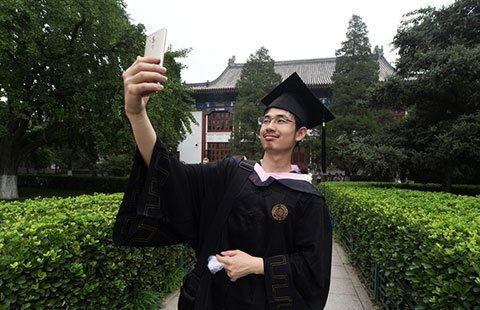Suddenly, it's a small world
By Wang Zhuoqiong (China Daily) Updated: 2016-06-01 06:30Wang Chunfeng, vice-president of Beijing Utour International Travel Service Co Ltd, says the first significant milestone for the country's outbound tourism was when the National Bureau of Statistics first published figures on the subject in 2000. That year more than 10.47 million outbound trips were made. Before then official statistics related only to inbound tourism and domestic travel.
From 2001 to 2015, Wang says, China's outbound tourism market grew by more than 18 percent a year, and it is projected to reach 600 million in total in the next five years.
Change is also reflected in the reasons people give for going abroad.
"In the early days most outbound travel was related to business or work," Wang says. "Now more than 90 percent of it is for leisure."
Thanks to rising demand for individual travel and more specialized and even personalized tour products, the ease of booking flights and accommodation on the internet and of obtaining visas, as well as the increase in flight destinations throughout the world, even from smaller Chinese cities, physical travel agencies have been in sharp decline, Wang says. Last year less than a third of travel bookings made in China were made in a brick-and-mortar travel agency.
As recently as five years ago, for many people outbound traveling was still a dream, Wang says, but that has changed.
Jiang Yiyi, director of the China Tourism Academy's International Tourism Development Institute, says China's outbound tourism market is likely to grow rapidly this year, with the number of outbound tourists projected to surpass 130 million, 10 percent more than last year.
Developed economies are paying more attention to the role of inbound tourism in boosting local economies and employment. So neighboring, medium-distance and long-distance destinations will continue to compete for Chinese tourists, she said, thanks to relaxed visa policies and improved Chinese-language services that many countries have introduced in recent years.
More outbound tourists are likely to emerge from China's central and western regions, especially from second- or third-tier cities and rural areas, she says.
The Ministry of Transport forecasts that the country will have 42 high-speed railway lines operating by the end of this year, stretching a total of 20,000 kilometers. The rapid development of high-speed rail gives people from once-isolated areas easy access to large cities, which will greatly broaden the source of outbound Chinese tourists.
Urbanization will also continue to power growth in tourism consumption. Figures from the National Bureau of Statistics suggest 58 percent of the country's population will live in cities by the end of this year. Mid-sized and small cities and rural areas are already warming to the outbound tourism market.
- Flight-tests check routes to Nansha airfields
- Premier to set new course in Mongolia
- Copyright violators to be placed on blacklist
- Car-hailing firm bans mentally ill, criminals from driving
- Calling it quits: Divorce rate jumps 6%
- More rain to create Yangtze flood control pressure
- China condemns S Sudan attack that killed 2 peacekeepers
- National digital platform set up for volunteer services
- Typhoon Nepartak leaves six dead, eight missing in east China
- Fifth lighthouse to shine on S China Sea










